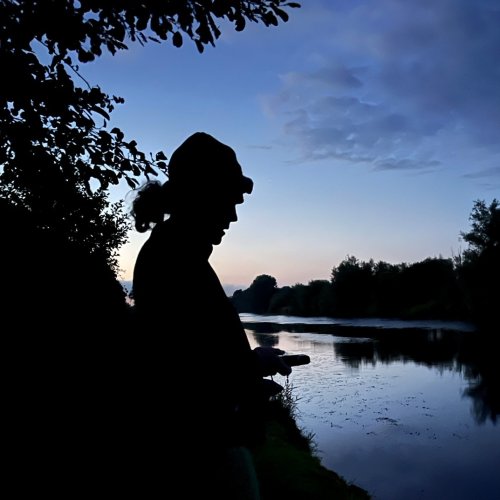Mount Falcon is home to at least 7 species of bat, but on a cool and humid evening in mid-August this year we were most interested in counting Daubenton’s Bat. We joined National Parks and Wildlife Service Ranger Alison Delaney on the west bank of the southern half of the Mount Falcon Fishery as she collected data for the Waterways Bat Survey.
The method for spotting and counting this tiny furry flyer is equal parts technology and keen eye-sight. Delaney carries with her a handheld electronic device about the size of your mobile phone. The black box only has one feature, and that’s a dial on its face which the user tunes to the frequencies different bats are known to echo locate. Chirps, squeaks, chatters and pips which cannot be picked up by the human ear are made audible through the device.
Upon hearing a distinctive rapidly repeating tone on the frequency sensor Delaney shines a torch out over the water to confirm the presence of a Daubenton’s Bat. If she can both hear the bat on the sensor and see it flying through her beam she is able to record the sighting as a confirmed “pass”. If she only hears the bat, but doesn’t catch a glimpse of the speedy flyers buzzing the surface of the water looking for dinner, she only records it as an “unsure pass”, meaning that she only heard it, but didn’t visually identify the bat.
According to Bat Conservation Ireland, the Daubenton’s Bat is often called the ‘water bat.’ The species is “easily recognised in flight by its low, level flight a few centimetres above the surface of lakes, slow-moving rivers and canals. It skims like a hovercraft above the water in search of caddisflies, mayflies and midges, and may even scoop prey from the water surface using its big feet. Many other bats feed over lakes and rivers, but none has such a close association with water as the Daubenton’s. The Daubenton’s bat can even swim if it makes a mistake and ends up in the water.”
Bat Conservation Ireland piloted the Daubenton’s Bat Waterway Survey based on the Bat Conservation Trust (UK) methodology in 2005, their website states. The survey has been continued annually in the Republic of Ireland and Northern Ireland since 2006. The aim is to assess levels of activity of Daubenton’s bat. Trend information from 2006-2019 indicates that species is currently stable. Updated data is still being collected.
Though Delaney was only able to hear the bats on that balmy night, recording them as “unsure passes”, there was a lot of activity. Other bats were joining in the fray like the pipistrelle. The pipistrelle, of which there are several varieties, can easily be spotted all around the estate, but especially feeding over the fishing pond at dusk.
To learn more about the bats of Ireland check out the Irish Bat Monitoring Program. If you want to volunteer and help collect data about Irish bats check out the “Get Involved” section of the Bat Conservation Ireland website.










